The best rotary laser level is a favorite of many construction workers, thanks to its ease of use. Unlike other laser levels, this option rotates, so you do not have to keep adjusting its angle during use. Again, the best rotary laser levels work automatically so that you can carry out your projects fast and efficiently.
While a laser level is common with construction workers, the unit is also great for DIYers who need to carry out simple tasks such as hanging art in their home, or for any other home improvement project.
In the above applications, the level helps you create horizontally and vertically level surfaces for your projects, or to find the slope for a project. You can also use it to set walls or to find the perfect level for art on your wall.
For interior work, the rotary level installs on a ceiling or a wall, and you do not need to have a laser detector. If you have to use these laser levels outdoors, you need a laser detector. You can operate the levels using a remote control. On a clear day, you may not see the beam clearly, which is why sometimes a laser detector might come in handy for interior work.
These units are ideal for exterior work. You mount them on a tripod during use. You can use the laser level without a laser detector, but the range may not be as much as you need. If you use a laser detector, the range doubles. These laser levels offer a green or a red beam – be sure to get the right color for the application you need.
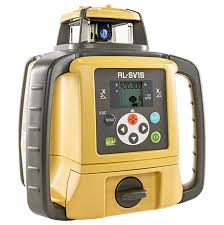
What makes a rotary level different is the rotation of the beam, which goes around at a 360-degree angle. High power units can make up to 1000 rotations a minute, but the number of rotations will depend on the power of the unit you are using and the application. For roadside projects or large outdoor projects, a high-power fast-rotating level comes in handy. For simple indoor tasks such as hanging art on walls, you need a simple low-speed unit.
Inside the level is a diode that produces the powerful beam of light that these levels use. This beam can create both horizontal and vertical lines.
Like other laser levels, the rotary level projects a laser beam dot that shows a 360-degree line on the area you need to show the level. Modern units can adjust their angle automatically so that the beam generated is perfectly horizontal or vertical during use. You need to place it on a flat surface mounted on a wall or on a tripod. The unit will do automatic adjustments to project a horizontal dot. There are also manual leveling options.
The units also come with a single line generator with a plumb up and plumb down capability. Their ruggedness and their long-range make them ideal for exterior work such as grading, laying pipes, and laying foundations.
The options range from simple units that you can mount on a tripod, but others are large that they need to be mounted on a tractor or a platform. The latter are designed for grading work and large projects. If you need a unit for simple projects at home, a simple unit comes in handy.
These devices use laser emitted from a diode. The diode produces light when electrons are stimulated, and they give off a beam of light. The light is then passed through mirrors and prisms and pointed in one direction to give a laser beam.
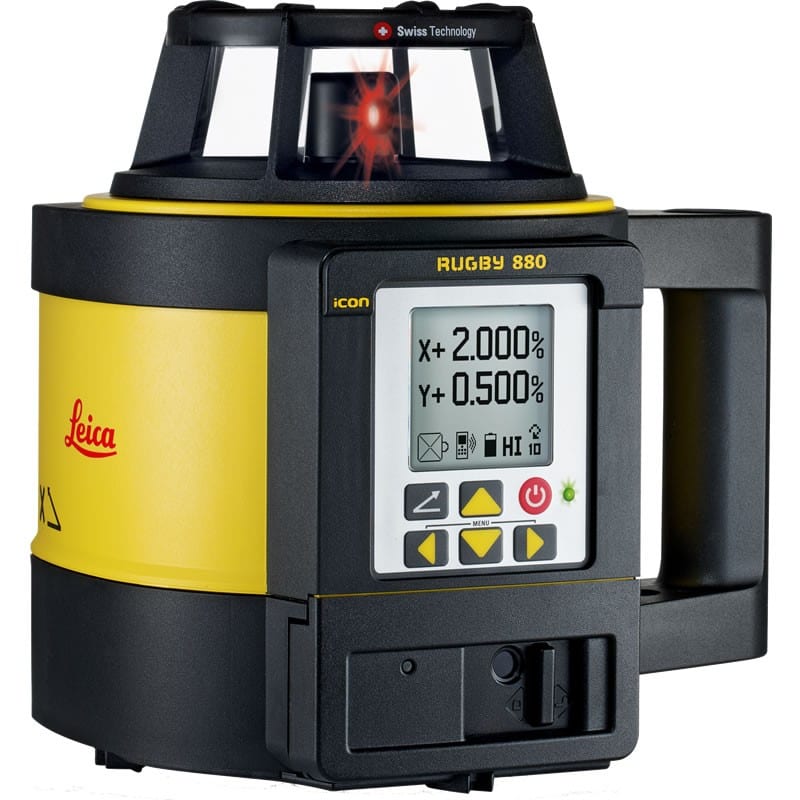
The laser level then projects the beam of light in the form of a dot. You can use the dot as a level reference point for your project. The rotary level rotates 360 degrees to make a complete line, so you never have to create two reference points with dots. This way, once you set the unit on the angle you need, it will be set to go.
The size of the laser beam is dependent on the size of the diode. You need a smaller beam for more efficiency. While the first units were only used indoors, today you can use the laser level anywhere. They pair with a laser beam detector that is able to read the beam from the laser level. This detector is positioned a specific distance away from the diodes. It is then moved up and down until it detects the laser beam and blinks or beeps.
The green lasers are becoming more common than the red ones as they can offer 400 percent more brightness for easier use. These green ones, however, require more power to use, and your battery will last less long when you choose them. The red lasers are more accurate, and they work under a wide range of temperatures.
A rotating laser level also needs a few accessories such as a tripod, mounting brackets, alkaline or rechargeable batteries, and a charger. You also need a receiver and a receiver clamp to start using your unit. You also need a unit that comes with a hand carrying case with foam padding that protects the interior components of your unit. The case also makes the unit easier to carry to different work sites.
If you work with your rotary level every day, you need special red or laser beams glasses. The glasses make the beam more visible, and they also protect your eyes.
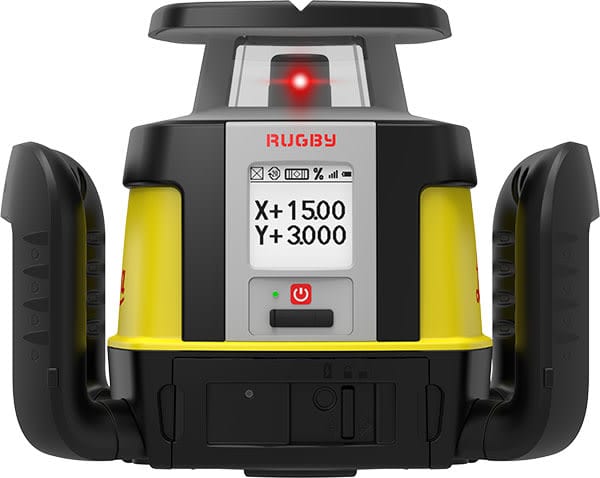
Horizontal laser levels are the most common. These levels emit a horizontal beam that shows you the level across a horizontal axis.
Dual-beam lasers are more versatile as they emit both horizontal and vertical beams. With these laser levels, you can establish both the plumb reference and level lines. However, the units do not produce both horizontal and vertical planes at the same time. Instead, they produce the horizontal plane and then a reference dot on the ceiling.
For the best rotary laser level, a dual-beam means a straight horizontal line across the room and a plump up the dot on the ceiling of the room. So far, there is no unit that produces vertical and horizontal planes at the same time.
Rotary lasers can either run on a fixed speed setting or on a variable speed setting. The speed of the unit is indicated in RPM (rotations per minute). If the unit has fixed RPM, it doesn’t offer a speed setting button. A fast RPM travels further than a slow RPM beam. However, the fast RPM bean is dimmer, and you need a laser detector to see it clearly. Any level speed higher than 600 requires a laser detector.
Laser levels with adjustable speed are ideal for use in indoor applications. Here, you can adjust the unit to a lower speed for the best visibility. As the speed of the rotating laser level reduces, the laser dot becomes a solid line on the wall. If you need to have a solid dot instead of a line common with rotating laser levels, you can adjust the rotation speed to zero RPM.
The rotary level can be used on a tripod or freestanding. When mounting them on a tripod, the level will either be magnetic, or it will have a clamp to hold on to the tripod.
Calibrating your laser level keeps it working efficiently for a long. You need to calibrate the laser level at least once every six months to keep it accurate. You might take the level to the manufacturer or to a manufacturer-recommended shop for calibration if your level is still covered by the warranty.
If your rotary level is automatic self-leveling, you need a professional or the manufacturer to calibrate it for you as these are a little more complex than self-leveling or manual leveling rotating levels.
To check how your level is working, you need to place it on the ground on a clear stretch. Mark two fixed points that are at least 100 meters apart on the ground. If you are on the road, you can use chalk marks on the ground on the concrete curb. If you are using an auto-level, you need someone else to hold the rod for you.
If your readings are different by half an inch, then your level is off by about quarter an inch in 300 feet. This is the accuracy that most rotary levels offer. If the difference is significant, you need to look for a professional to calibrate it and tune it to accuracy.
Before you use a laser level, you need to check for accuracy to ensure it is in good condition.
Grading is what happens to level the ground before construction work begins. The process ensures that the ground is level enough to accommodate the foundation of a building. The laser level shows when the ground is level and when no digging or filling is required.
After this, you only need to jot down the readings and start grading. Because the laser spins around the site, it is easier for you to move from one stake to the next, marking the level point.
The best rotary Laser levels come with varying features from variable rotating speeds, rechargeable batteries, grade capability, and beam scanning to remote controls. The range and the nature of the beams also vary greatly from one level to the next. The best rotating laser level for you should be the one that meets your applications. Such a level should offer the visibility, the functionalities, and the range that accommodates your application succinctly.
Leica has a wide range of best rotary laser levels to be used in different applications. Our best rotary laser levels include:
Leica Rugby 610 – This is a horizontal rotary laser level with only one button for ease of operation.
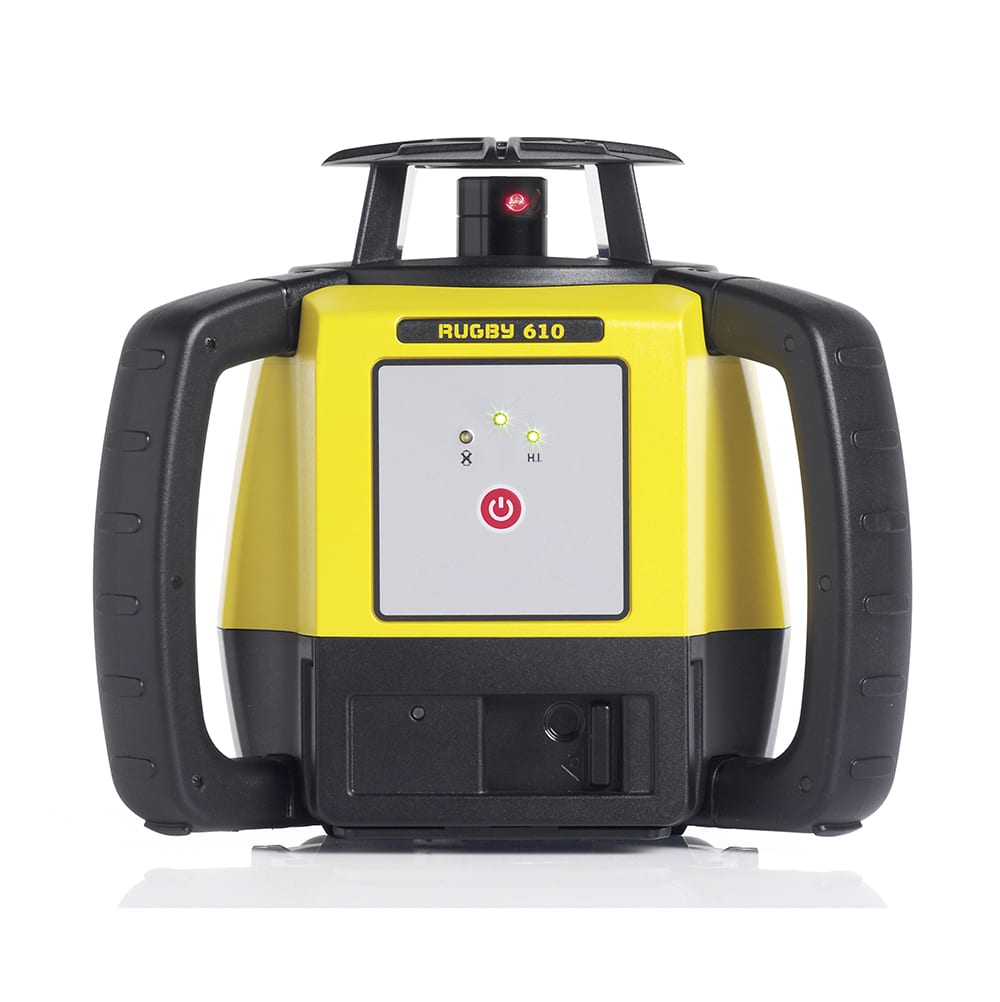
Leica Rugby 620 – This is a horizontal best rotary laser level that offers a manual grade capability.
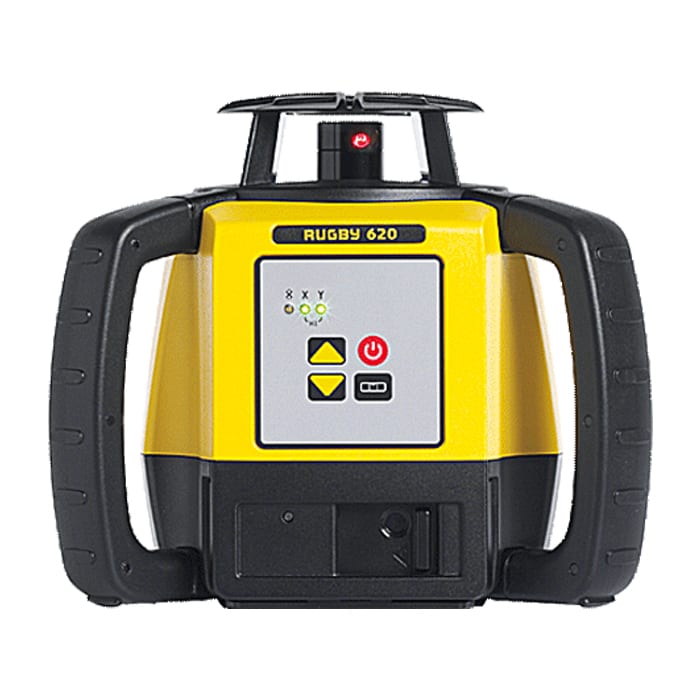
Leica Rugby 640G – This is a multipurpose rotating laser that offers a high beam for indoor and outdoor use.
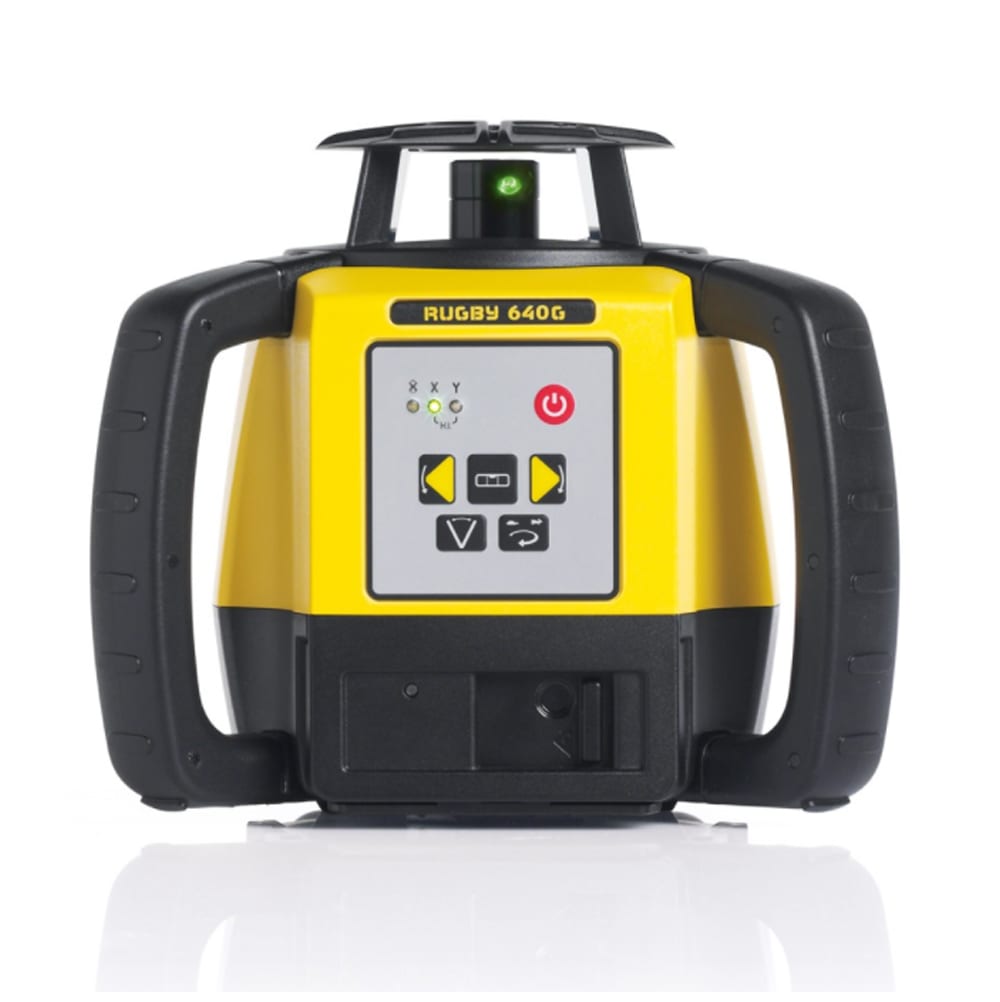
Leica Rugby 680 – This unit offers a semi-automatic laser level with dial-in grade capability.

Leica rotating laser levels sport modern self-leveling technology that makes them easier to use. They are designed for different industries and applications such as pure surveying, reality capture, public safety, heavy construction, building, monitoring, mining, agriculture, and utilities.
You can choose between horizontal, vertical, and dual-beam lasers. Most of the lasers have simple buttons that allow you to operate them with ease.
Topcon offers a number of rotating laser levels to meet the needs of different users. The levels have features such as auto-leveling and red and green beams to choose from. A special feature on these levels is Smartscan, which adapts to how you work, making the level easier to use.
The levels feature high-quality design with top-notch machining to ensure they stay on level wherever you use them. The self-alignment functionality makes the units easier to use. They are designed rugged to withstand outdoor weather and remain reliable every day you work outdoors.
TopCon also offers associated accessories such as receivers, sensors, and theodolites.
Spectra offers an easy way to check elevations, transfer levels, and calculate the fill and cuts. Some of the main features offered on these levels include:
Spectra Precision Rotating Laser Levels accommodate different applications with some simple enough for one person use and others sophisticated for use on heavy construction and other large projects.
View our list of dual scope rotating laser levels here

The automatic, self-leveling dual grade laser levels are the most rugged, cost-effective laser levels that do multiple jobs. Dual Grade Laser Levels can withstand drops of up to one meter (three feet) onto concrete and tripod tipovers up to 1.5 meters (five feet). This strength, combined with full weatherproofing and dustproofing, reduces downtime and lowers repair costs over the life of the product.
Call us today to learn about the best rotary laser level brand models. Or visit our store to request a quote.
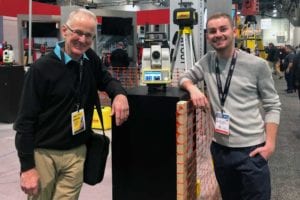
Leaving so soon?
Get Your Free Ultimate Buyer's Guide to Total Stations!
Unlock expert insights and make the right choice for your construction layout needs.
